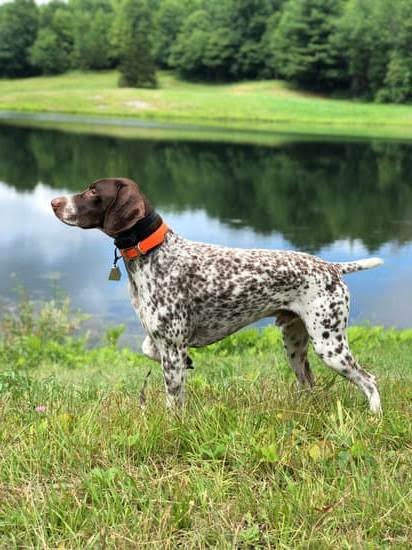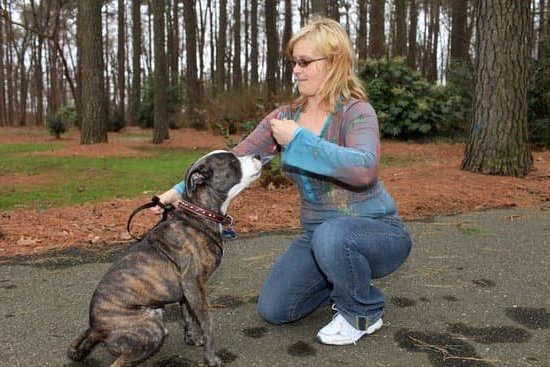Are you wondering how to train bay dogs? Bay dogs play a crucial role in hunting, especially when it comes to tracking and locating game. This article will guide you through the process of training bay dogs, from understanding their characteristics and behavioral traits to advanced training techniques such as tracking and scent work.
Bay dogs are essential in hunting scenarios, as they are trained to corner or “bay” the prey until the hunter arrives. Understanding their breed, characteristics, and behavioral traits is vital when it comes to training bay dogs. Additionally, selecting the right bay dog for training is crucial for success in hunting situations.
In this article, we will cover everything from basic obedience training for bay dogs, such as sit, stay, come, and heel commands, to more advanced techniques like teaching your dog to bay on command. We will also explore conditioning and physical training for bay dogs, troubleshooting common issues that may arise during training, and discuss the key factors of consistency and patience needed for successful bay dog training.
So if you’re ready to learn how to train your bay dog effectively for hunting purposes, keep reading.
Understanding the Breed
Bay dogs are an essential part of hunting teams, particularly when it comes to tracking game like hogs and bears. Understanding the breed-specific characteristics and behavioral traits of bay dogs is crucial in effectively training them for their role in hunting. Bay dogs, such as the Treeing Walker Coonhound or Black Mouth Cur, are known for their endurance, intelligence, and strong prey drive.
When it comes to understanding the breed of bay dogs, it’s important to note that they are bred for specific purposes such as hunting or herding. This means that their characteristics and behavioral traits are usually tied to these roles. For example, they may have a strong instinct to chase or track scents, which can be honed and utilized through proper training techniques.
- Endurance: Bay dogs are known for their stamina and ability to keep up with fast-paced hunts over rough terrain.
- Intelligence: These dogs are quick learners and can understand complex commands when trained properly.
- Prey Drive: Bay dogs have a natural inclination to chase and corner game animals, making them valuable assets in hunting scenarios.
Understanding these traits is vital in selecting the right bay dog for training. It’s essential to match the dog’s characteristics with the specific hunting needs and environment. By understanding their nature, you can tailor your training methods to bring out the best in your bay dog.
With this understanding of breed-specific traits, owners can then begin training bay dogs using appropriate techniques that align with their natural instincts.
Training a bay dog requires patience, consistency, and specialized methods that cater to their unique abilities. Here’s how you can make sure you’re on the right track as you prepare your loyal companion:
- Recognize Breed-Specific Traits: Understand that different breeds of bay dogs may have varying levels of stamina, intelligence, and prey drive.
- Adapt Training Methods: Tailor your approach based on your dog’s behavior tendencies and individual capabilities.
- Bond Through Training: Use positive reinforcement techniques to build trust and create a bond with your bay dog during training sessions.
By recognizing the unique characteristics and behavioral traits of bay dogs, owners can effectively train them for successful hunting expeditions while ensuring they remain physically healthy and mentally stimulated.
Selecting the Right Bay Dog for Training
When it comes to training bay dogs, selecting the right dog for the job is crucial. Not all breeds are suited for this type of hunting and tracking work, so it’s important to do your research and choose a breed that has the necessary characteristics and behavioral traits. Here are some factors to consider when selecting a bay dog for training:
1. Breed: Some common bay dog breeds include Treeing Walker Coonhounds, Bluetick Coonhounds, Redbone Coonhounds, and Black and Tan Coonhounds. These breeds are known for their strong tracking abilities and their tendency to vocalize or “bay” when they find prey.
2. Temperament: Look for a dog with a confident, independent, and strong-willed temperament. Bay dogs need to be able to work independently and make decisions in the field. They should also be social and friendly with other dogs and people.
3. Health and Physical Fitness: Ensure that the dog you select is in good health and physical condition. Bay dogs need to have endurance, stamina, and agility to keep up with long hunts through varied terrain.
Once you’ve selected the right bay dog for training, you can begin building a strong bond with your new partner and embarking on the journey of training them for hunting and tracking work.
Now that you understand what to look for in a bay dog, it’s time to learn how to train bay dogs effectively.
Training Tips
– Use positive reinforcement techniques such as treats, praise, and playtime to encourage desired behaviors.
– Be patient and consistent with your training methods.
– Gradually introduce your dog to new environments, scents, and distractions during training sessions.
Now that you understand what characteristics make a good bay dog candidate, let’s move on to establishing trust and communication with your new hunting companion.
Building a Strong Bond
Bay dogs are an integral part of hunting, and establishing a strong bond with them is crucial to their training and success in the field. Building trust and communication with your bay dog creates a solid foundation for all the training that follows, and it also strengthens the overall relationship between you and your canine companion.
One of the key ways to build a strong bond with your bay dog is through positive reinforcement. This involves using rewards such as treats, praise, or playtime to motivate and encourage desired behaviors. By rewarding your bay dog when they respond correctly to commands or exhibit good behavior, you are reinforcing the bond between you and building a positive association with training.
Another important aspect of building trust and communication with your bay dog is understanding their body language and vocalizations. Learning to interpret your dog’s signals can help you better understand their needs, emotions, and responses to different situations. This understanding can enhance communication between you and your bay dog, leading to a more effective training process.
In addition to positive reinforcement and understanding body language, spending quality time with your bay dog outside of training sessions can also contribute to building a strong bond. Engaging in activities such as walks, playtime, or simply relaxing together can help foster a sense of companionship and mutual trust.
This quality time spent together strengthens the connection between you and your bay dog, making them more receptive to training and more responsive to your cues. By taking these steps to establish trust and communication with your bay dog, you set the stage for successful training in all aspects of their role as a hunting companion.
Basic Obedience Training for Bay Dogs
In order to have a successful hunting experience with your bay dog, it is important to start with basic obedience training. Teaching your bay dog commands such as sit, stay, come, and heel will not only make them more well-behaved in the field but also create a stronger bond between you and your canine companion.
The key to training bay dogs in basic obedience lies in consistency and positive reinforcement. When teaching your dog to sit, for example, use treats or verbal praise to reward them when they successfully follow the command. Repeat the process multiple times throughout the day to reinforce the behavior. It’s important to keep training sessions short but frequent to prevent your dog from becoming bored or overwhelmed.
Another essential aspect of obedience training is teaching your bay dog to come when called. This command is crucial for ensuring that your dog stays within a safe distance while hunting and can be easily brought back if they wander too far.
Use a long line or leash at first to guide them back and reward them with treats or playtime when they successfully respond to the command. With patience and consistency, your bay dog will learn to come reliably when called.
Additionally, training your bay dog to heel is important for maintaining control in various hunting scenarios. Using treats or toys as a motivator, practice walking with your dog on a leash by your side and reward them for maintaining the position.
Gradually increase the level of distractions during training sessions so that your bay dog can learn to remain focused on you while walking in different environments. By consistently practicing these basic obedience commands, you will set a strong foundation for further training and hunting success with your bay dog.
Introduction to Baying
Baying is a behavior specific to certain breeds of hunting dogs, such as coonhounds and foxhounds. It involves the dog barking or howling to alert their human companions to the location of game, usually after they have trapped it or “treed” it.
Teaching your bay dog to bay on command can be a valuable skill in the field, as it can help you locate game more efficiently. In this section, we will explore how to train bay dogs to bay on command.
Understanding the Instinct
Before you can start training your bay dog to bay on command, it is crucial to understand the instinct behind this behavior. Baying is a natural response for these breeds when they have located prey and are signaling its location to their handlers. Understanding this natural instinct will help you in effectively training your dog to respond to your command.
Basic Training Techniques
To begin training your bay dog to bay on command, start by associating a verbal cue with the act of baying. You can use a word like “bay” or “speak” as the verbal cue.
When your dog naturally begins baying during a hunt, say the cue word at the same time and reinforce it with positive reinforcement such as treats or praise. Repeat this process consistently during hunts and practice sessions until your dog starts associating the word with the action of baying.
Advanced Training Strategies
Once your bay dog has grasped the concept of baying on command, you can then work on refining and reinforcing this behavior through advanced training strategies. You can incorporate simulated hunting scenarios with artificial scents or decoys to provide real-world practice for your dog’s newly learned skill. Additionally, consider enrolling in specialized tracking or scent work classes with professional trainers who specialize in working with bay dogs.
Overall, teaching your dog to bay on command requires patience, consistency, and an understanding of their natural instincts. With proper training techniques and dedication, you can effectively train your bay dog to be an invaluable asset in hunting situations by responding reliably to your commands.
Advanced Training
Bay dogs are known for their incredible sense of smell and tracking abilities, making them valuable assets in hunting and search operations. Advanced training for bay dogs involves honing these natural instincts and teaching them to effectively track scents and locate targets. This type of training is essential for maximizing the potential of bay dogs in various fields such as hunting, law enforcement, search and rescue, and detection work.
Tracking training for bay dogs involves introducing them to different scents and teaching them to follow a specific scent trail. Scent work training helps bay dogs recognize and differentiate between various scents, allowing them to identify targeted scents amidst distractions. Search training involves teaching bay dogs how to systematically cover an area to locate a specific target or person. These advanced skills require patience, consistency, and proper techniques in order to be successful.
To train bay dogs in tracking, scent work, and search operations, it’s important to start with basic obedience training to establish a strong foundation. This includes commands such as sit, stay, come, and heel. Once the dog has mastered these basic commands, you can gradually introduce more complex tasks related to tracking scents and conducting searches. Positive reinforcement techniques using rewards such as treats or toys are effective ways to encourage bay dogs during their advanced training.
Some Relevant Data:
| Training Method | Description |
|---|---|
| Tracking Training | Involves following specific scent trails |
| Scent Work Training | Teaches recognition of different scents |
| Search Training | Focuses on systematic area coverage for target location |
Conditioning and Physical Training for Bay Dogs
Conditioning and physical training are crucial aspects of preparing your bay dog for hunting. Training for endurance and stamina will not only improve their overall fitness but also enhance their performance in the field. Here’s how to train bay dogs to build endurance and stamina.
Establish a Consistent Exercise Routine
To build endurance and stamina, it’s important to establish a consistent exercise routine for your bay dog. Regular exercise helps improve cardiovascular health, muscle strength, and overall endurance. Activities such as running, hiking, or swimming are excellent ways to build up your dog’s stamina. Gradually increase the duration and intensity of the exercises to avoid overexertion.
Incorporate Interval Training
Interval training is an effective method for improving endurance in bay dogs. This involves alternating periods of high-intensity activity with periods of rest or lower intensity. For example, you can incorporate short bursts of quick sprints during your regular runs or hikes. This type of training challenges your dog’s cardiovascular system and helps improve their ability to sustain physical activity over extended periods.
Engage in Mental Stimulation Activities
In addition to physical exercise, mental stimulation is also essential for building endurance and stamina in bay dogs. Engage your dog in activities that require problem-solving, such as scent work or maze games. Mental stimulation not only keeps your dog engaged but also helps improve their focus and resilience during long hunting trips.
By focusing on conditioning and physical training, you can effectively prepare your bay dog for the demands of hunting while ensuring their overall health and well-being. Remember that consistency and patience are key when it comes to building endurance and stamina in bay dogs.
Troubleshooting Common Training Issues
Training bay dogs can be a rewarding experience, but it is not without its challenges. Aggression, distractions, and fear are common issues that bay dog owners may encounter during the training process. Understanding how to address these issues is crucial for the success of both the dog and the hunter.
When dealing with aggression in bay dogs, it’s important to first identify the root cause of the behavior. Aggression can stem from fear, anxiety, or territorial instincts. By working with a professional trainer or behaviorist, you can develop a targeted training plan to address aggression in your bay dog. This may involve desensitization exercises, positive reinforcement techniques, and establishing clear boundaries and expectations.
Distractions are another common hurdle in bay dog training. Whether it’s a new scent, wildlife, or other animals, bay dogs can easily become distracted during hunting expeditions. To mitigate this issue, training sessions should gradually introduce distractions in a controlled environment. Utilizing scent work and tracking exercises can help improve focus and concentration in bay dogs when faced with external stimuli.
Fear can also impede a bay dog’s progress during training. Whether it’s fear of certain terrain or unfamiliar environments, addressing fear-based behavior requires patience and understanding. Positive reinforcement in the form of treats and praise can help gradually build confidence in fearful bay dogs. It’s essential to provide a safe and supportive training environment to help your dog overcome their fears.
Consistency and Patience
In conclusion, the successful training of bay dogs requires a deep understanding of their breed characteristics and behavioral traits. It is essential to select the right bay dog for training, one that has the appropriate temperament and drive for hunting. Building a strong bond with your bay dog is crucial in establishing trust and effective communication. This bond will serve as the foundation for all training efforts.
Basic obedience training lays the groundwork for more advanced training such as tracking, scent work, and search training. Teaching your bay dog to bay on command is also an important skill to develop. Consistency and patience are key factors throughout the entire training process – from basic obedience to troubleshooting common issues such as aggression, distractions, and fear.
Ultimately, successful bay dog training requires dedication, consistency, patience, and a deep understanding of your dog’s behavior and needs. By following these guidelines and maintaining a positive attitude towards your bay dog’s development, you can ensure that they reach their full potential as skilled hunting companions. With the right approach and techniques tailored to their specific breed traits, you can enjoy a rewarding partnership with a well-trained bay dog.
Frequently Asked Questions
How Do You Train a Bay Dog to Hog?
Training a bay dog to hog involves teaching it how to track and locate hogs, then bark or “bay” at them while keeping a safe distance. This requires obedience training, scent recognition, and exposure to different hog behaviors.
What Is the Hardest Thing to Train a Dog to Do?
The hardest thing to train a dog to do can vary depending on the individual dog and its breed. But in general, training a dog for reliable off-leash obedience in distracting environments is often considered one of the most challenging tasks.
When Should I Start Training My Hunting Dog?
It’s best to start training a hunting dog as early as possible, ideally when they are still puppies. Exposing them to different environments, socializing them with other dogs, and beginning basic obedience training lays a strong foundation for their future hunting skills.

Welcome to the blog! I am a professional dog trainer and have been working with dogs for many years. In this blog, I will be discussing various topics related to dog training, including tips, tricks, and advice. I hope you find this information helpful and informative. Thanks for reading!





